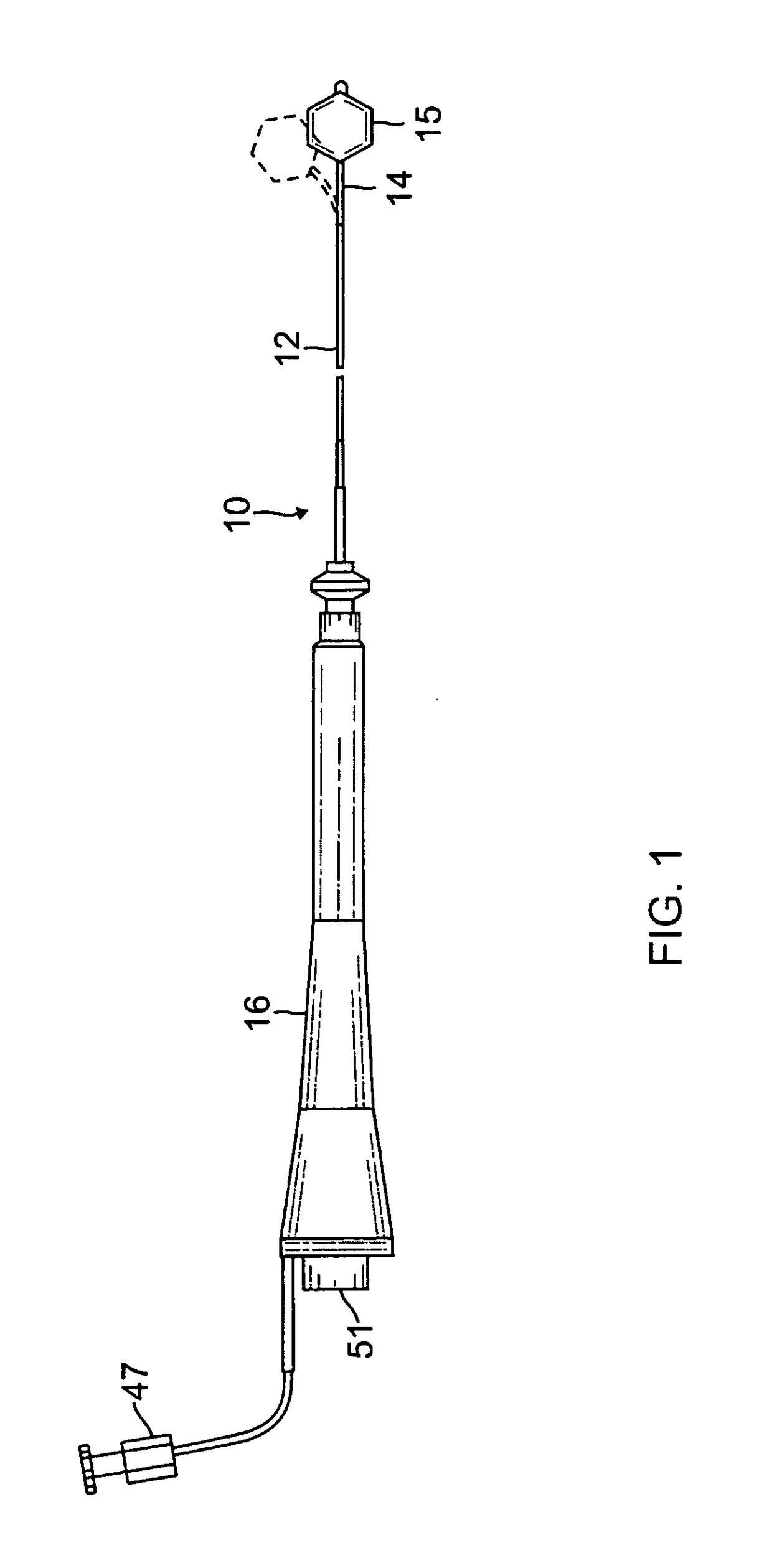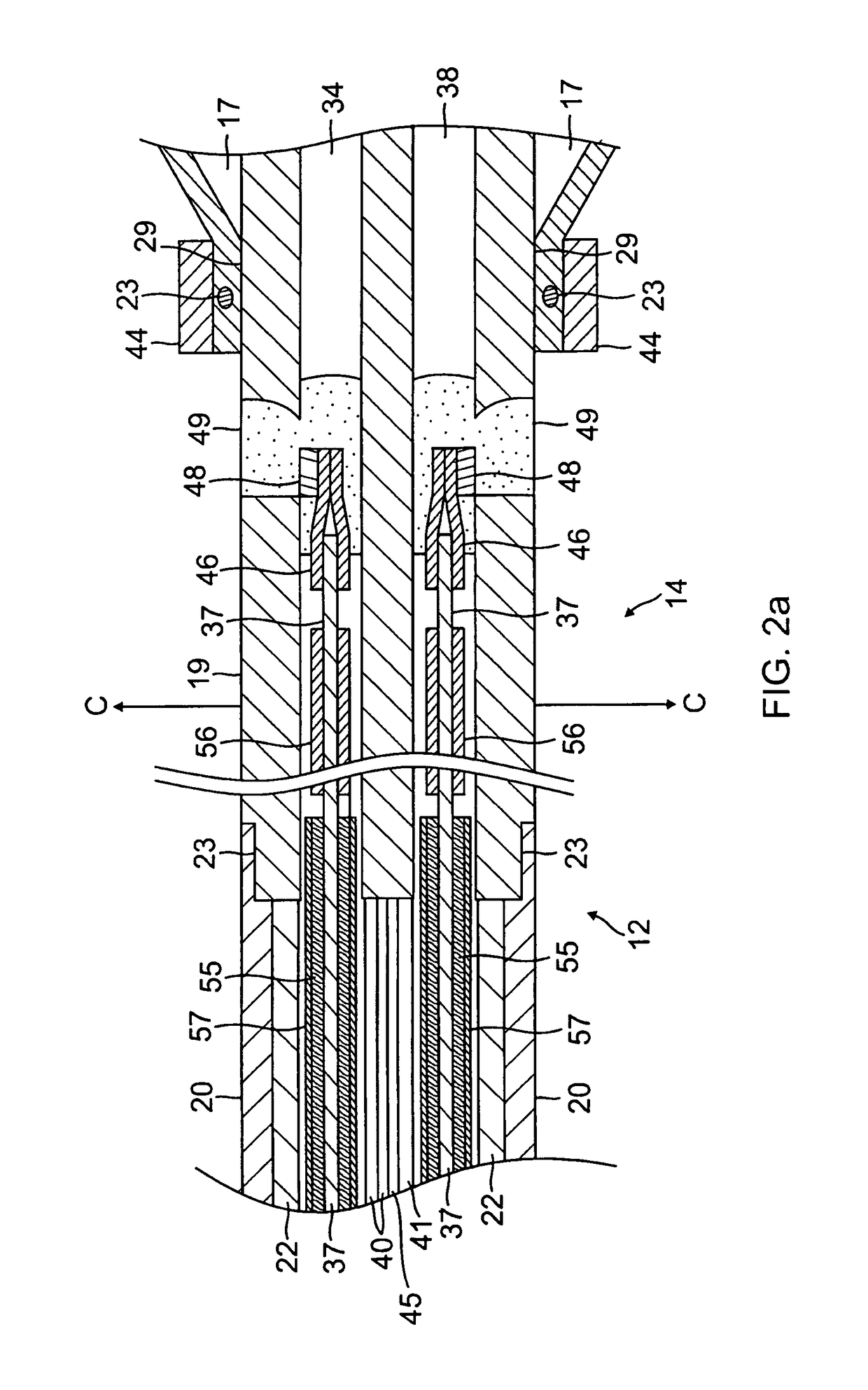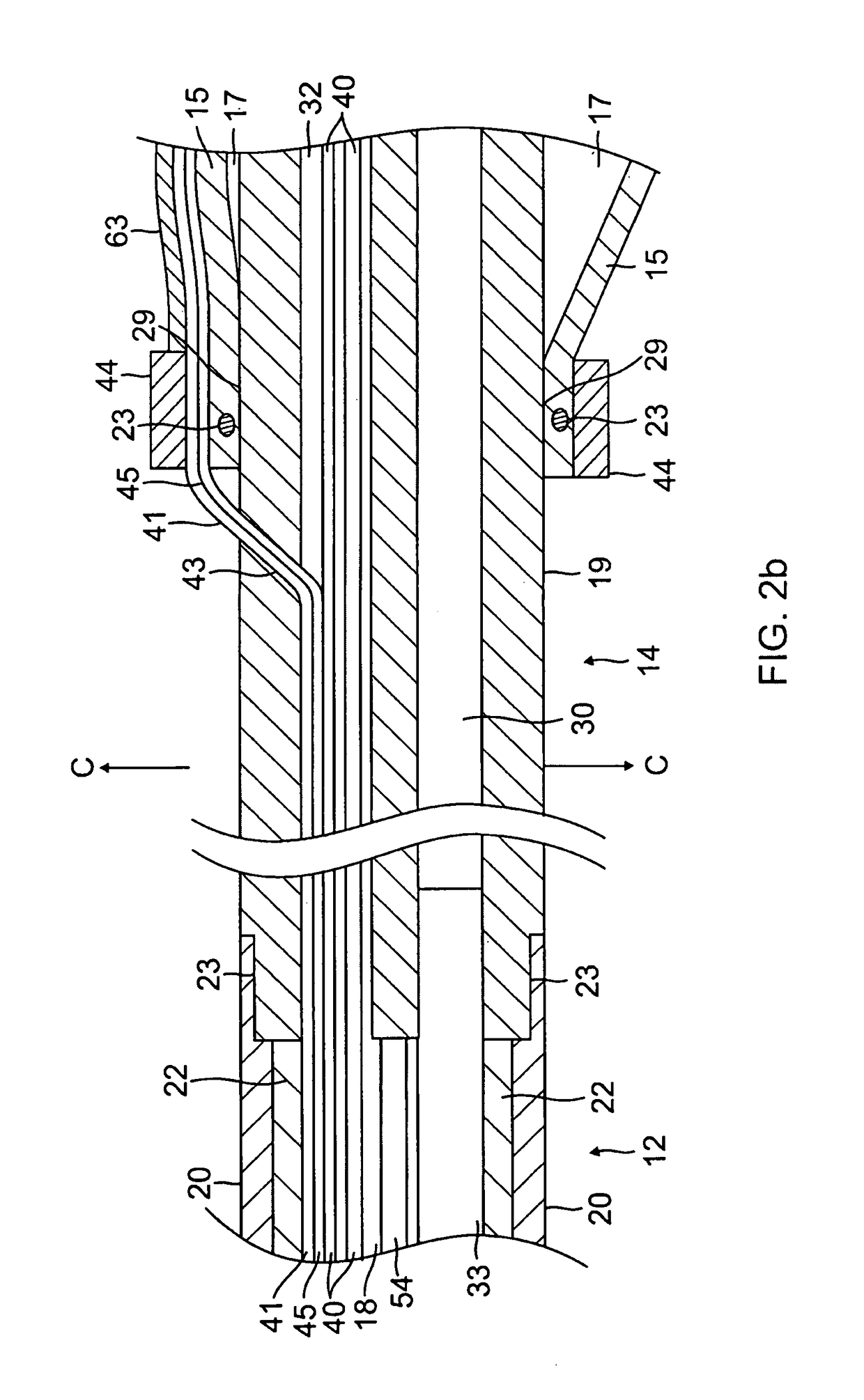Catheter with protective barrier member
a technology of catheter and protective barrier, which is applied in the field of catheter with protective barrier member, can solve the problems of sometimes causing damage to the esophagus, causing certain complications, and damaging the esophagus, and achieve the effect of manipulating the tip section
- Summary
- Abstract
- Description
- Claims
- Application Information
AI Technical Summary
Problems solved by technology
Method used
Image
Examples
Embodiment Construction
[0035]The present invention provides a catheter for shielding organs and / or tissues from electrophysiologic procedures performed within a patient's body, especially the chest cavity although it can adapted for use in the abdominal cavity. In particular, the catheter can be adapted to protect an esophagus by reducing the exposure of an anterior wall of the esophagus to extreme temperatures, physical penetration or trauma and / or other risks that may be posed by the procedures performed on or in the atria of the heart. In one embodiment, the catheter is adapted for (i) minimally invasive insertion into a patient's chest cavity in a collapsed configuration, (ii) expansion to a deployed configuration to shield the esophagus, and (iii) return to the collapsed configuration for repositioning or removal from the chest cavity.
[0036]As shown in FIG. 1, one embodiment of the shielding catheter 10 generally comprises an elongated catheter body 12, a deflectable intermediate section 14 distal of...
PUM
 Login to View More
Login to View More Abstract
Description
Claims
Application Information
 Login to View More
Login to View More - R&D
- Intellectual Property
- Life Sciences
- Materials
- Tech Scout
- Unparalleled Data Quality
- Higher Quality Content
- 60% Fewer Hallucinations
Browse by: Latest US Patents, China's latest patents, Technical Efficacy Thesaurus, Application Domain, Technology Topic, Popular Technical Reports.
© 2025 PatSnap. All rights reserved.Legal|Privacy policy|Modern Slavery Act Transparency Statement|Sitemap|About US| Contact US: help@patsnap.com



